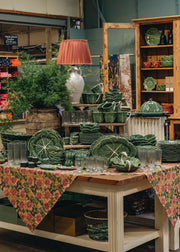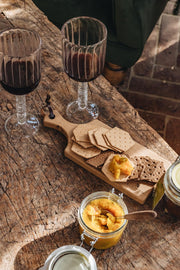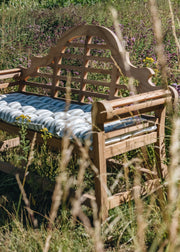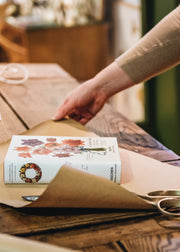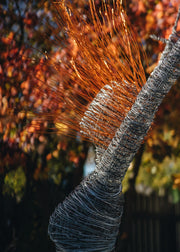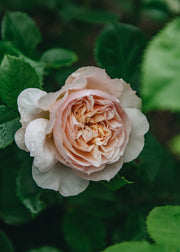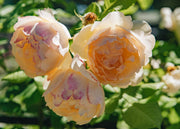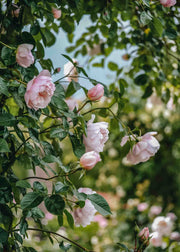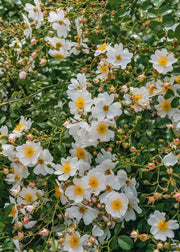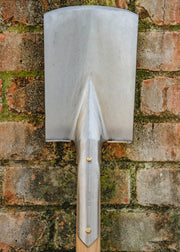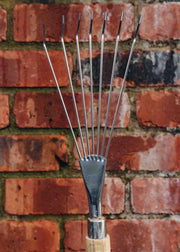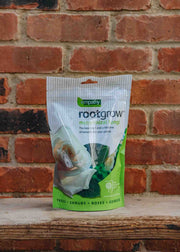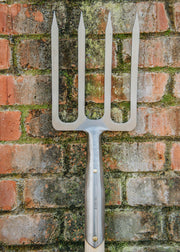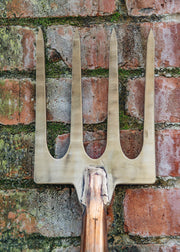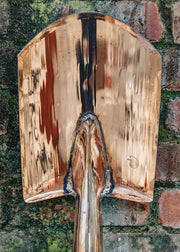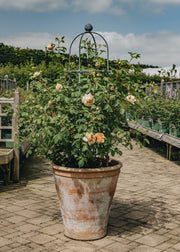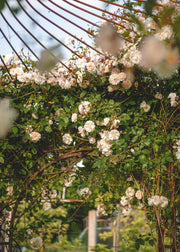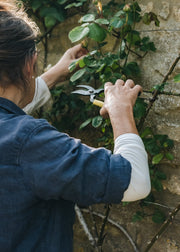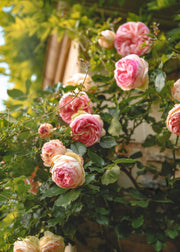How to: Plant Roses

Roses are marvellously tolerant and robust, there are only a few things you might consider before planting:
- Some roses are bred to be tolerant of shade, others require more sun, but overall, most roses need four hours of sunshine a day. (Depending on the position of your garden the sunshine in a particular spot can vary from month to month.)
- Roses are wonderfully productive, and greedy as a result. They need fertile soil and do not want to compete for space and nutrients, so assess the proximity of nearby plants and trees. For the same reason it is better not to plant them where another rose has just been growing because it will have exhausted the soil of nutrients.
- If you are planting a rose in a container, the smallest diameter of the pot must be at least approximately 45cm (18in)

Choosing your rose
Considering the appropriateness of the rose for your space
If you have chosen a shrub rose, you need to assess the size of the bush before you plant it. Some are large and vigorous, others more compact. It is important to remember how big it is likely to grow in a few years, although clearly how you prune it is also relevant.
If you are looking to cover an area of ground, the types of prostrate roses vary in the distance they will cover, so consider how far you want it to spread and if, as in the case of Rosa Partridge, you want it to climb as well.
Climbing roses are perfect for more controlled coverage of pergolas, rose arches or obelisk. If you intend it to cover a wall or fence, it is advisable to put the supportive structure in place - wires or trellises - before you plant the rose.
The more vigorous Rambling roses cover larger spaces, completely cloaking a wall or shed if required and will elegantly grow up through trees. A vigorous rambler, such as Rosa Kiftsgate, needs a large site to reach its full potential.
When planting in a container (unless it is extremely large), it is clearly important to select a rose that will not outgrow its home too quickly, so choose a more compact variety, for example Rosa Roald Dahl or Rosa Lady of Shalott.
David Austin Roses
You will need
- A pair of gloves
- Garden spade
- Garden fork
- Well-rotted farmyard manure (from a farm or purchased in a bag)
- Mycorrhizal fungi
Water the rose thoroughly before you begin.
Before you start digging, hygiene is important. Make sure that the area surrounding the spot you have chosen is cleared of any dead cuttings or old leaves to reduce the risk of transferring disease.
Thoroughly dig over the area you intend to plant the rose, then dig a hole, at least 40cm (16in) x 40cm (16in). Using a fork, loosen the soil at the bottom of the hole to encourage root growth.

Clearing the ground of leaves and weeds

Digging a hole of at least 40cm across
With a spade, line the bottom of the hole well with well-rotted farmyard manure and then sprinkle the bottom and sides of the hole with Mycorrhizal fungi, again to encourage root growth.
Place the rose, still in its growing container, in the hole to ensure that the union of the rose will be about 5cm (2in) below the level of the ground. Adjust if required then take the rose out of the container and position in hole. Backfill the soil and firm down gently with your boot.
Water the now planted rose thoroughly again.

Removing the rose from the container

Backfilling the soil around the newly planted rose
Tools for Planting Roses
One of the great delights of many roses is their scent, so growing a rose in a container on a terrace near a doorway, window or seating area adds layers of pleasure to a summer garden.
The container should be at least 45cm (18in) in diameter. Ideally place it in its intended position while it is empty, to avoid having to shift the full weight of a planted up, watered container.
Porous pots are ideal for roses, so terracotta pots are recommended but zinc, stone or glazed earthenware are also feasible. It is a good idea to place the pots on feet to facilitate drainage and thus ensure the roots do not become too wet.
Pots & Planters
You will need:
- A pair of gloves
- Hand trowel
- Garden Spade
- Well-rotted farmyard manure (from a farm or purchased in a bag) and John Innes No 3 Compost
- Mycorrhizal fungi
Water the rose thoroughly.
Place shards of terracotta or stone in the bottom of the pot to ensure the drainage hole is not blocked by soil.
Assess the container you are using and with a spade make a half-and-half mixture or enough well-rotted farmyard manure and John Innes No. 3 compost.
Fill the pot with the mixture and press it down gently to avoid air pockets. When you have reached a point where you think the union of the rose will be 5cm (2in) below the desired height of soil in the container, test the height by placing the rose, still in the container it was grown in, and adjust if necessary.
Remove the rose from the pot and sprinkle the sides and base with Mycorrhizal fungi. Place rose in the container. Back fill using a trowel with the remaining mixture and firm down with your hands.
Water the rose thoroughly.
Following planting and throughout the growing season the rose, because it is in a container, will require regular checking to ensure it has enough water to thrive.




